#McDonnell Douglas F-4E Phantom II
Explore tagged Tumblr posts
Video
Exit by Niall Grant Via Flickr: Pulling up from the valley, Turkish Air Force special 50th anniversary F-4E-2020 Phantom II from 111 Filo
0 notes
Text

A color bird from the Turkish Air Force roaring through the Sakarya River Valley
#Turkish Air Force#McDonnell Dougla#F-4#F-4E#Phantom#Phantom II#Terminator#Military aircraft#aviation#Fighter aircraft#jet#plane#flying
50 notes
·
View notes
Text

Two different generations at #RamsteinFlag24 being held in Greece 🇬🇷 at the moment [Pic NATO] #F4 #F35
@Saint1mil via X
#f 4e phantom#mcdonnell douglas aviation#fighter bomber#f 35 lightning ii#stealth#fighter#lockheed martin#aircraft#hellenic air force#aviation#usaf#military aircraft#military aviation#aviation military#aviation military pics#mil
34 notes
·
View notes
Photo

McDonnell Douglas RF-4E Kai Phantom II, JASDF
Source: masahi
44 notes
·
View notes
Text
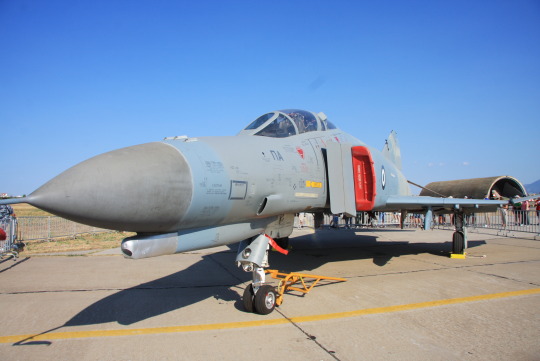
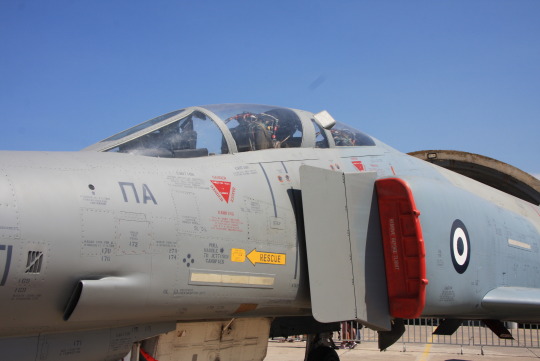
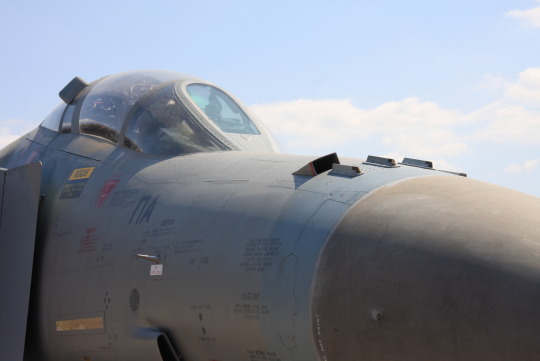

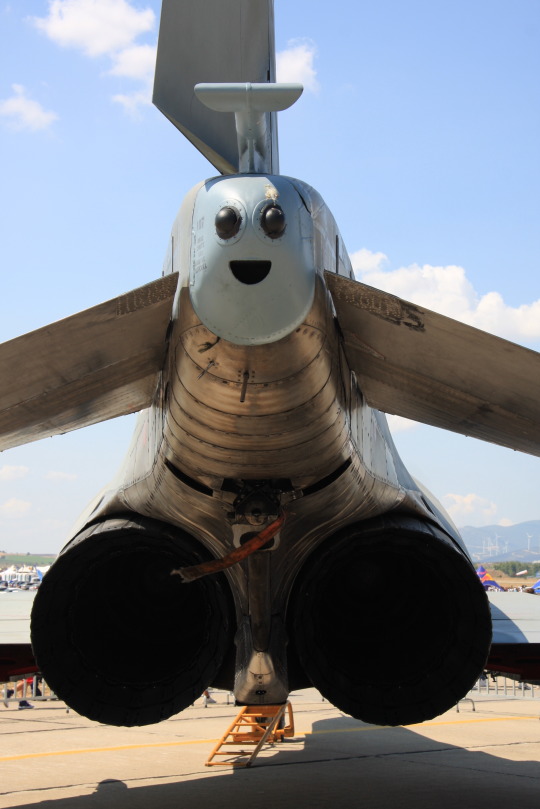

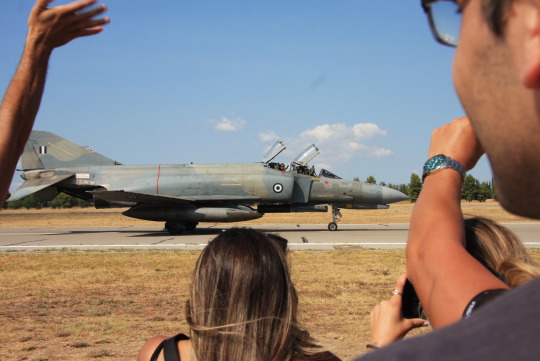






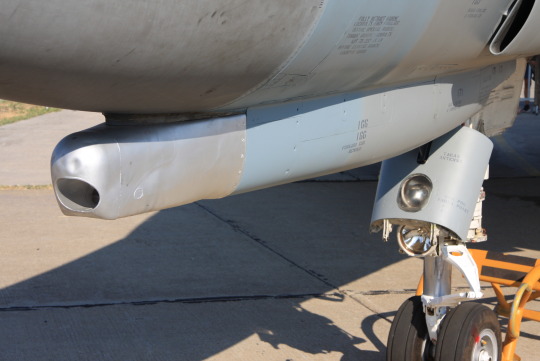

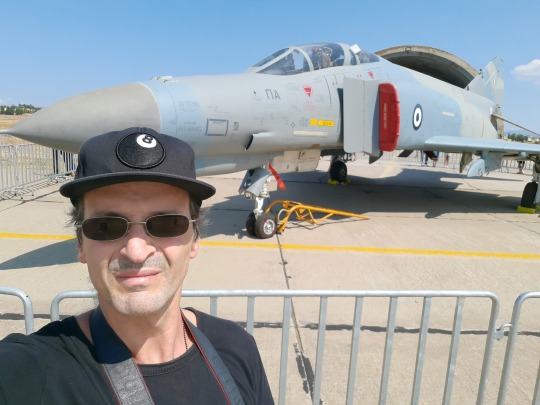

McDonnell Douglas F-4E Phantom II _ Hellenic Air Force _ Tanagra Air Force Base _ Athens Flying Week, Greece [02.09.2023] _ Photos by: Spyros Kaprinis.
https://www.haf.gr/arsenal/f-4e-phantom-ii/
#McDonnell Douglas#F-4E Phantom II#Hellenic Air Force#HAF#ΠΑ#Tanagra Air Force Base#Athens Flying Week#Greece#Spyros Kaprinis#2023
0 notes
Text
Have you ever wondered how the McDonnell Douglas F-4 Phantom II, famous for not having an internal gun and paying the price during the first few years of the Vietnam War, actually got one during the course of the war and in relatively short order?

F-4B of the US Navy
Well, it’s really simple: McDonnell Douglas had also developed a recon variant of the Phantom, the RF-4, which basically traded the radar for a camera set, requiring a longer nose to fit it, but which was otherwise identical to the combat variants.

So once the need for an internal gun was made, it was a simple matter of swapping the camera equipment for a gun, and adding the radar back

And thus, the gun-equipped F-4E, was born, giving a starting point for subsequent advanced variants, all equipped with guns.
184 notes
·
View notes
Text
Phantom Friday...
... last of the breed.

The very last F-4 Phantom to be built in the United States, an F-4E-67-MC S/N 78-0744 rolled out of the McDonnell-Douglas plant on this day, October 25, in 1979.
To make matters even more bittersweet, it wasn't a Phantom for the US Air Force, Navy or Marine Corps. Even tho it bore a US serial number, It was transferred to the Republic of Korea Air Force under the Peace Pheasant II Foreign Military Sales program.
When production ended at the Saint Louis plant, more than 2,600 went to the USAF, the U.S. Navy and Marine Corps had accepted another 1200 and the rest went to friendly foreign nations.
A little-known fact, Mitsubishi Heavy Industries built 138 Phantoms under license in Japan. One of the aircraft (17-8440) was the last of the 5,195 F-4 Phantoms to be produced. It was manufactured by Mitsubishi on 21 May 1981.
35 notes
·
View notes
Text

McDonnell Douglas F-4E Phantom II 196 TFS / 163 TFG / California ANG 3 September 1987 Photo by:Stephan de Bruijn
30 notes
·
View notes
Video
Chute Deployed by Treflyn Lloyd-Roberts Via Flickr: Panned shot of Greek Phantom 01520 as it slows on the runway at Fairford, ready to be added to the static display at the 2024 Royal International Air Tattoo. Aircraft: Hellenic Air Force McDonnell Douglas F-4E (AUP) Phantom II 01520, wearing special 50 Years of Phantom Operations with HAF tail markings. Location: RAF Fairford, Gloucestershire.
#Panned#shot#pan#panning#motion#blur#spun#Greek#Phantom#01520#slow#shutter#speed#runway#Fairford#ready#add#static#display#2024#Royal#International#Air#Tattoo#RIAT#FRIAT#stand#show#airshow#Aircraft
9 notes
·
View notes
Text
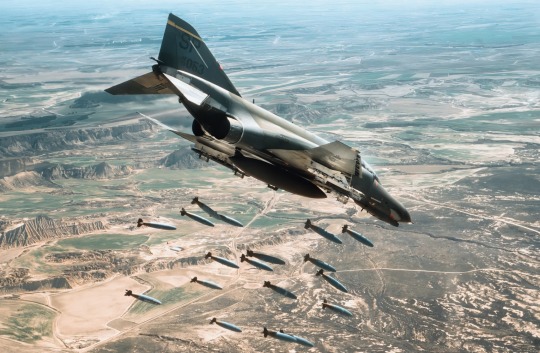
McDonnell Douglas F-4E Phantom II dropping Mk 82 bombs, 1986 ➤F-4 VIDEO: https://youtu.be/0M2XfMjwRwo
➤HD IMAGE: https://dronescapes.video/F4Phantom
#f 4 phantom ii#f 4#aviation industry#aviation history#mcdonnell douglas#jet fighter#supersonic bomber#supersonic#us navy#interceptor#youtube#aircraft#airplane#aviation#dronescapes#military#documentary
16 notes
·
View notes
Note
may I wander why you choose the Mcdonnel douglas f-4E phantom II in specific for the banner?
Fighter planes are an interest of mine, I guess.
Especially that one, for some reason.
4 notes
·
View notes
Video
Going up! by Niall Grant Via Flickr: Turkish Air Force F-4E Phantom II high speed climb out of the valley
#111 Filo#Low level flying#McDonnell Douglas F-4E-2020 Phantom II#Phantom 50th#Turkish Air Force#flickr
2 notes
·
View notes
Text

Phantoms from the 86th TFW over Germany - 1985
#USAF#86th TFW#McDonnell Douglas#F-4#Phantom#F-4E#Fighter#Interceptor#Fighter Bomber#Military aviation#combat aircraft#jet#Phantom II
50 notes
·
View notes
Text

Royal Thai Tiger Two (L.E. Schading)at bottom
@kadonkey via X
#f 16 fighting falcon#lockheed martin#fighter bomber#f 4e phantom#mcdonnell douglas aviation#gunfighter#aircraft#usaf#f-5e Tiger II#fighter#RTAF#aviation#cold war aircraft
13 notes
·
View notes
Text
Thunderbirds F-4E Released in April
Fine Molds will release next month a McDonnell Douglas F-4E Phantom II at 1:72 in the colors of the USAF Thunderbirds. Released on April 3, 2019. Further details can be found on the webpage. Kit includes two seated figures.

View On WordPress
0 notes
Video
67-0270 | McDonnell Douglas | F-4E-34-MC Phantom II | USAF by Florian DSO Via Flickr: McDonnell Douglas F-4E-34-MC Phantom II, (c/n 2997/0162), USAF s/n 67-0270, GA 21st TFTS 35TFW, 1989. 2 stars as a Mig Killer (Hum !). A nice study of F-4E-34-MC, 67-0270 assigned as the 21st TFTS Commander's jet, 35th TTW, home based at George AFB. Strange but true! Here are two errors relating to the livery of this Phantom : 1) It is funny that the paint shop screwed up the aircraft S/N on the fin, there was never an F-4E with the S/N 67-6270 built. 2) In addition, this aircaft carries two MiG kill stars on the intake vari ramp. In fact, 67-0270 was credited with shooting down only one MIG-21 on 8 Jul 1972 over North Vietnam (Mig 21), unit 4th TFS 366th TFW, Thailand. *1973: USAF 4th TFW. No one knows why no correction had been made since! Scanned from my original 35mm slide, which is part of my own personal collection. It is therefore with pleasure that I share this photo with the people of FLICKR. Obviously, I also thank its author, to whom I give it all the credit. abpic.co.uk/pictures/view/1336766
6 notes
·
View notes


